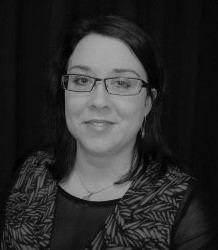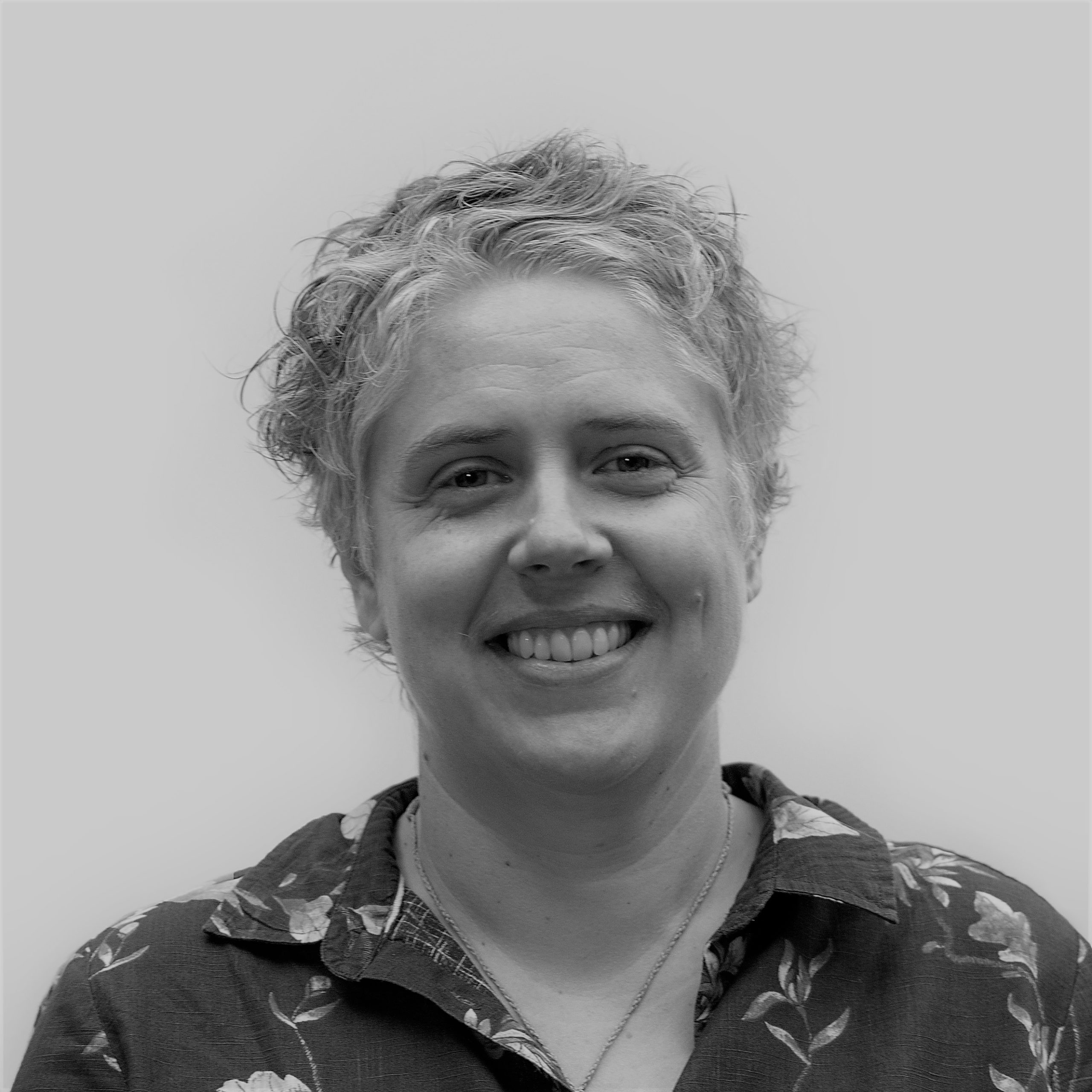Indicators
These are our current Child and Youth stream indicators. Click on any indicator to view the data dashboards or read more about the technical definitions.
Seclusion
Seclusion indicators by 100,000 population and per 1,000 bednights
Whānau engagement
Percentage of tāngata whai ora, who experience an in-scope activity, also had a whānau engagement activity recorded
Data source
PRIMHD
Technical notes
The process of service episode reconstruction is as follows:
1. Exclude any out of scope referrals, which are referrals where contact is not necessarily expected. These are any referrals that meet any of these criteria:
- ReferralEndCode is RI, RO or DZ – referral was declined or discharged with no direct contact required
- TeamType is 24 or 26 – Integrated Primary Access and Choice and Intellectual Disability teams
- ReferralEndCode is in (DM, DG, DD, ID) AND there does not exist an in-scope activity on the referral – referral ended in a way that indicates contact may not have been expected, and there was no activity
2. Within each unique combination of tangata whai ora and organisation, combine all overlapping in scope referrals into service episodes. This can be achieved in various ways, but the KPI programme uses a ‘gaps and islands’ approach:
- Sort referrals by Referral Start Date, Referral End Date, Referral ID
- Calculate the Ranked Order for each referral (sorting by Referral Start Date, Referral End Date, and then Referral ID to tiebreak)
- For each referral calculate the Previous End Date, which is the maximum Referral End Date of any referral with a lower Ranked Order (effectively the latest end date of any referral that started before this referral for this tangata whai ora at this organisation)
- For each referral compare Referral Start Date to Previous End Date to determine whether this is an index referral or overlap
- if referral Start Date <= Previous End Date this referral overlaps a previous referral and should roll into that service episode; set Index Referral?=0
- if referral Start Date> Previous End Date this referral starts a new service episode; set Index Referral? =1
- For each referral count the number of index referrals that have previously occurred for this tangata whai ora at this organisation, and append that value to the Organisation ID and HCU to form a globally unique service episode ID. For example the service episode for client ABC1234 at organisation G-0000 would be named G-0000_ABC1234_0; G-oo0o_ABC1234_1; etc.
- Service Episode Start Date = Referral Start Date of the index referral in each service episode.
3. Within each service episode identify the earliest in scope activity on any referral in the service episode
a. Exclude all activities where either of these criteria are met:
- ActivitySetting is one of these
- WR Written correspondence
- SM SMS text messaging
- OM Other social media, e-therapy
- ActivityType is one of these:
- T08 Care/liaison coordination contacts
- T24 Work opportunity/Employment/Vocational
- T33 Seclusion
- T35 Did not attend
- T37 On leave
- T43 Community support contacts
- T44 Advocacy
- T45 Peer support
- T52 Health coaching contact
- TCR MOH internal reference
b. Rank all remaining in scope activities by Activity Start Datetime, Referral ID, Activity ID
c. Calculate the Ranked Order for each in-scope activity (sorting by Activity Start Datetime, and then Referral ID and Activity ID to tiebreak)
d. Where Ranked Order = 1, this is the first in scope activity on the service episode
e. First In Scope Activity Start Datetime = Activity Start Datetime of this first in scope activity
f. Where Ranked Order = 3, this is the third in scope activity on the service episode
g. Third In Scope Activity Start Datetime = Activity Start Datetime of this first in scope activity
4. Calculate the wait time for each service episode:
a. Wait time to first in scope activity = difference in days between Service Episode Start Date and First In Scope Activity Start Datetime
b. Wait time to third in scope activity = difference in days between Service Episode Start Date and Third In Scope Activity Start Datetime
5. Calculate additional service episode metadata for use in analysis:
a. Service Episode End Date = maximum Referral End Date of all referrals within the service episode
b. Service Episode End Code = Referral End Code associated with the referral that has the maximum Referral End Date of all referrals within the service episode
i. Where multiple referrals share the maximum Referral End Date, if a DR exist then this is chosen. Otherwise the first alphabetical Referral End Code is chosen
c. Count Referrals = count referrals included in this service episode
d. Count Team Types = count of team types included in this service episode
e. Initial Team Type = Team Type of the index referral
f. Age at Service Episode Start = age in years on the Service Episode Start Date
g. In Scope Activity 365 Days Prior – Same Org? = if there exists an in-scope activity for this tangata whai ora at this organisation in the 365 days before Service Episode Start Date, them 1 else 0
h. In Scope Activity 365 Day Prior – Any Org? = if there exist an in-scope activity for this tangata wha ora at any organisation in the 365 days before Service Episode Start Date, then 1 else 0
i. Client Type =
i. If In Scope Activity 365 Days Prior – Same org? = then “Recurring – same organisation” else
ii. If In Scope Activity 365 Days Prior – Any org? = 1 then “Recurring – another organisation” else
iii. “New”
6. Calculate additional activity flags for analysis:
a. Details of the first in scope activity based on its ActivityType
i. FirstInScopeAcitivityIsInpatient? = 1 if ActivityType in (T02, T03, T04)
ii. FirstInScopeActivityIsCommunityCrisis? = 1 if ActivityType in (T01, To5)
iii. FirstInScopeActivityIsCommunityNonCrisis? = 1 if ActivityType not in (T01, T02, T03, To4, T05)
iv. FirstInScopeActivityIsCommunityResidentail? = 1 if ActivityType in (T25, T26, T27, T28, T29, T30, T48)
v. FirstInScopeActivityIsCrisisorInpatient? = 1 if ActivityType in (T01, T02, T03, T04, T05)
b. Count out of scope activities before first in scope activity = count of all activities on a service episode where Activity Start Datetime < First In-Scope Activity Start Datetime and where the activity is not in scope (per the standard ActivityType definition)
Additional notes
An overlap is established by comparing referral start and end dates, not datetimes. For example, if Referral A ends at 09:30 on 01/01/2020 and Referral B begins at 23:30 on 01/01/2020, this is an overlap and these referrals will be combined. On the other hand, if Referral A ends at 23:30 on 01/01/2020 and Referral B begins at 00:30 on 02/01/2020, this is not an overlap and these referrals will be in separate service episodes (assuming there are no other referrals for this tangata whai ora).
When combining referrals, be careful not to simply sort referrals by start date and check for an overlap with the previous referral; tangata whai ora may have a single ongoing referral that overlaps multiple other brief referrals and forms a single service episode even though none of the brief referrals overlap one another.
Open referrals (Referral End Date = null) are included at step (1) regardless of whether an in-scope activity exists on that referral. This is to ensure that we reconstruct accurate service episodes, rather than discard pieces of a service journey.
The wait time is calculated using calendar days, not 24-hour periods. For example, a service episode starting at 09:00 on 01/01/2020 with the first in-scope activity at 23:30 on 01/01/2020 would have a wait-time of 0 days. A service episode starting at 23:30 on 01/01/2020 with first in-scope activity at 00:30 on 02/01/2020 would have a wait-time of 1 day.
There is no mechanism to categorise a service episode as urgent.
When identifying the Third in-scope activity, there is no correction for duplicate activities, and activities that occur on the same day are all considered individually. This is how a single service episode can have 0 days to both first and third in-scope activity, when three separate activities occur on the day of service episode start.
When allocating a service episode to a reporting period, we use the Service Episode Start Date.
Data source
PRIMHD and StatsNZ population projections
Technical notes and shared definitions
A seclusion activity has:
- ActivityTypeCode = T33
- ActivityUnitType = “SECLUSION”
and is recorded against a referral with:
- TeamSetting = “Inpatient based”
- TeamType of
- Inpatient
- Forensic
- Intellectual Disability Dual Diagnosis
- Speciality
A bednight activity (for the purposes of the seclusion KPI) has:
- ActivityTypeCode not TCR
- ActivityUnitType = “BEDNIGHT”
- ActivityUnitCount > 0
- And where there does not exist a LEAVE record for the same date
- Same team restriction as above
- Note that there are no checks on ActivityTypeCode against the TeamType
A bednight is:
- A single midnight (00:00) that is crossed by a bednight activity
For example, a bednight activity with start date 2020-01-20 17:30 and end date 2020-01-21 09:00 would have one bednight; a bednight with start date 2020-01-20 00:00 and end date 2020-01-21 09:30 would also have one bednight. - Where bednight activities have been recorded with both start and end times of 00:00, we count only one of those.
For example, a bednight with start date 2020-01-20 00:00 and end date 2020-01-21 00:00 counts as only a single bednight. This is in line with the ActivityUnitCount calculated by MOH.
Total # bednights (sometimes seen as beddays) is the distinct count of bednights between the reporting start and end date. Where a single bednight activity crosses multiple reporting periods, only the individual bednights within the reporting period are counted.
For example, a bednight activity with start date of 2019-12-20 18:00 and end date of 2020-01-13 09:00 would have 11 bednights counted in the Oct-Dec19 quarter and 13 bednights counted in the Jan-Mar20 quarter.
Population = sourced from StatsNZ, DHB projection for the reporting period
Seclusion activities are sometimes recorded differently due to varying business processes. To accommodate this, we create seclusion events or seclusion episodes in line with Te Whatu Ora recommendations.
Where there are fewer than 60 minutes between seclusion activities (for the same person and the same referral), these activities are rolled up into a single seclusion event.
A seclusion event combines overlapping or adjacent seclusion activities for an individual tangata whai ora within a single referral.
Indicator definitions
Total # seclusion events = distinct count of seclusion events where the seclusion event start date falls within the reporting period.
# tāngata whai ora secluded = distinct count of tāngata whai ora with a seclusion event where the seclusion event start date falls within the reporting period.
Seclusion events per 1000 bednights = Total # seclusion events / (Total # bednights / 1,000)
Seclusion events per 100k population = Total # seclusion events / (Population / 100,000)
Seclusion tāngata whai ora per 100k population = # tāngata whai ora secluded / (Population / 100,000)
Hours seclusion = sum of the hours of T33 seclusion activity that occur within the reporting period. When a single seclusion event crosses multiple reporting periods, only the hours within the reporting period are counted.
For example, a seclusion event with start date of 2019-12-28 18:00 and end date of 2020-01-02 09:00 would have 78 hours counted in the Oct-Dec19 quarter and 33 hours counted in the Jan-Mar20 quarter.
Additional notes
Seclusion events are allocated to a shift based on the seclusion event start time:
- 00:00 – 06:59 night
- 07:00 – 14:59 morning
- 15:00 – 23:59 afternoon
Likewise, seclusion events are allocated to a weekday based on the seclusion event start date.
Note the fundamental distinction between seclusion events, which are allocated to a reporting period based on their start date, and seclusion hours and bednights, which are broken apart when they cross reporting boundaries and then apportioned pro rata. There are variations in these definition across the sector, so if you observe seclusion numbers that are close but not identical, this date logic may be a good place to check first.
A note about forensic data
Forensic seclusion events are summarised in a separate report. All forensic seclusion events and bednights are excluded from the national and Te Whatu Ora division overviews.
Data source
PRIMHD
Technical notes
Percentage of tāngata whai ora with whānau engagement
- Activity start date is >= start date of selected quarter and <= end date of selected
- Tāngata whai ora with an activity
- Activity type is not
- T35 Did not attend
- T08 Care/liaison co-ordination contacts
- Activity setting is not
- WR – Written correspondence
- SM – SMS text messaging
- PH – Telephone
- Activity Unit Type is CONTACT
- Team setting is not I Inpatient
- Team type is not
- 01 Inpatient team
- 05 Forensic team
- 08 Residential/accommodation team
- 26 Intellectual disability
- Activity type is not
- Tāngata whai ora with whānau activity
- Activity Type is one of:
- T32 – Contact with family/whānau, consumer not present
- T36 – Contact with family/whānau, tāngata whai ora/consumer present
- and/or Family/whānau involvement = 1 Yes
- Activity type is not T35 did not attend
- Activity setting is not
- WR – Written correspondence
- SM – SMS text messaging
- OM – Other social media/E therapy
- Activity Type is one of:
- % of tāngata whai ora with whānau engagement in a quarter = Tāngata whai ora with whānau activity/ tāngata whai ora with an activity
First whānau engagement activity in episode of care
The process of service episode reconstruction is as follows:
1. Exclude any out of scope referrals, which are referrals where contact is not necessarily expected. These are any referrals that meet any of these criteria:
- ReferralEndCode is RI, RO or DZ – referral was declined or discharged with no direct contact required
- TeamType is 24 or 26 – Integrated Primary Access and Choice and Intellectual Disability teams
- ReferralEndCode is in (DM, DG, DD, ID) AND there does not exist an in-scope activity on the referral – referral ended in a way that indicates contact may not have been expected, and there was no activity.
2. Within each unique combination of tangata whai ora and organisation, combine all overlapping in scope referrals into service episodes. This can be achieved in various ways, but the KPI programme uses a ‘gaps and islands’ approach:
- Sort referrals by Referral Start Date, Referral End Date, Referral ID
- Calculate the Ranked Order for each referral (sorting by Referral Start Date, Referral End Date, and then Referral ID to tiebreak)
- For each referral calculate the Previous End Date, which is the maximum Referral End Date of any referral with a lower Ranked Order (effectively the latest end date of any referral that started before this referral for this tangata whai ora at this organisation)
- For each referral compare Referral Start Date to Previous End Date to determine whether this is an index referral or overlap
- if referral Start Date <= Previous End Date this referral overlaps a previous referral and should roll into that service episode; set Index Referral?=0
- if referral Start Date> Previous End Date this referral starts a new service episode; set Index Referral?=1
- For each referral count the number of index referrals that have previously occurred for this tangata whai ora at this organisation, and append that value to the Organisation ID and HCU to form a globally unique service episode ID. For example the service episode for client ABC1234 at organisation G-0000 would be named G-0000_ABC1234_0; G-oo0o_ABC1234_1; etc.
- Service Episode Start Date= Referral Start Date of the index referral in each service episode.
3. Within each service episode identify the earliest in scope activity on any referral in the service episode
- Exclude all activities where either of these criteria are met:
- ActivitySetting is one of these
- WR – Written correspondence
- SM – SMS text messaging
- PH – Telephone
- OM – Other social media, e-therapy
- ActivityType is one of these:
- T08 Care/liaison coordination contacts
- T24 Work opportunity/Employment/Vocational
- T33 Seclusion
- T35 Did not attend
- T37 On leave
- T43 Community support contacts
- T44 Advocacy
- T45 Peer support
- T52 Health coaching contact
- TCR MOH internal reference.
- ActivitySetting is one of these
- Rank all remaining in scope activities by Activity Start Datetime, Referral ID, Activity ID
- Calculate the Ranked Order for each in-scope activity (sorting by Activity Start Datetime, and then Referral ID and Activity ID to tiebreak)
- Where Ranked Order = 1, this is the first in scope activity on the service episode
- First In Scope Activity Start Datetime = Activity Start Datetime of this first in scope activity This determines the time period for analysis.
4. Find the first whānau engagement datetime activity
- Activity Type is one of:
- T32 – Contact with family/whānau, consumer not present
- T36 – Contact with family/whānau, tāngata whai ora/consumer present
- and/or Family/whānau involvement = 1 Yes
- Activity type is not T35 did not attend
- Activity setting is not
- WR – Written correspondence
- SM – SMS text messaging
- OM – Other social media/E-therapy
5. Calculate additional service episode metadata for use in analysis:
- Initial Team Type = Team Type of the index referral
- Age at Service Episode Start = age in years on the Referral Start Date
6. Calculate the difference between the First in Scope Activity Start Datetime and first whānau engagement datetime. For each episode group as follows
- 14 days in under (Potential for a few negative number not an in scope activity)
- 15-28 days
- 29+ days
- No whānau contact
7. Exclude initial team type
- 01 Inpatient team
- 05 Forensic team
- 08 Residential/accommodation team
- 26 Intellectual disability
8. Only include episodes with a third in scope activity.
Child and Youth stream leads
Our Child and Youth stream leads represent our sector contributors and work alongside the KPI Programme team to deliver sector events and guide continuous improvement initiatives. Get to know our current stream leads.

Abigail McDonald
Tuakana Whaiora Taiohi | Youth Mentor and Consumer Advisor - Whāraurau



 Login / Register
Login / Register Search
Search Menu
Menu





